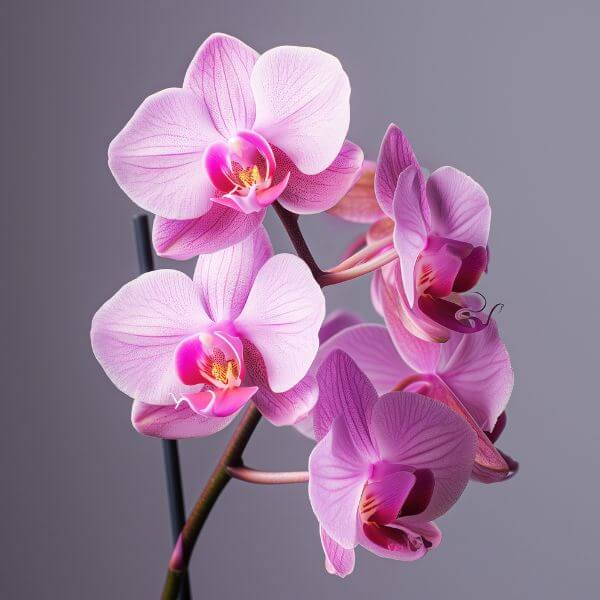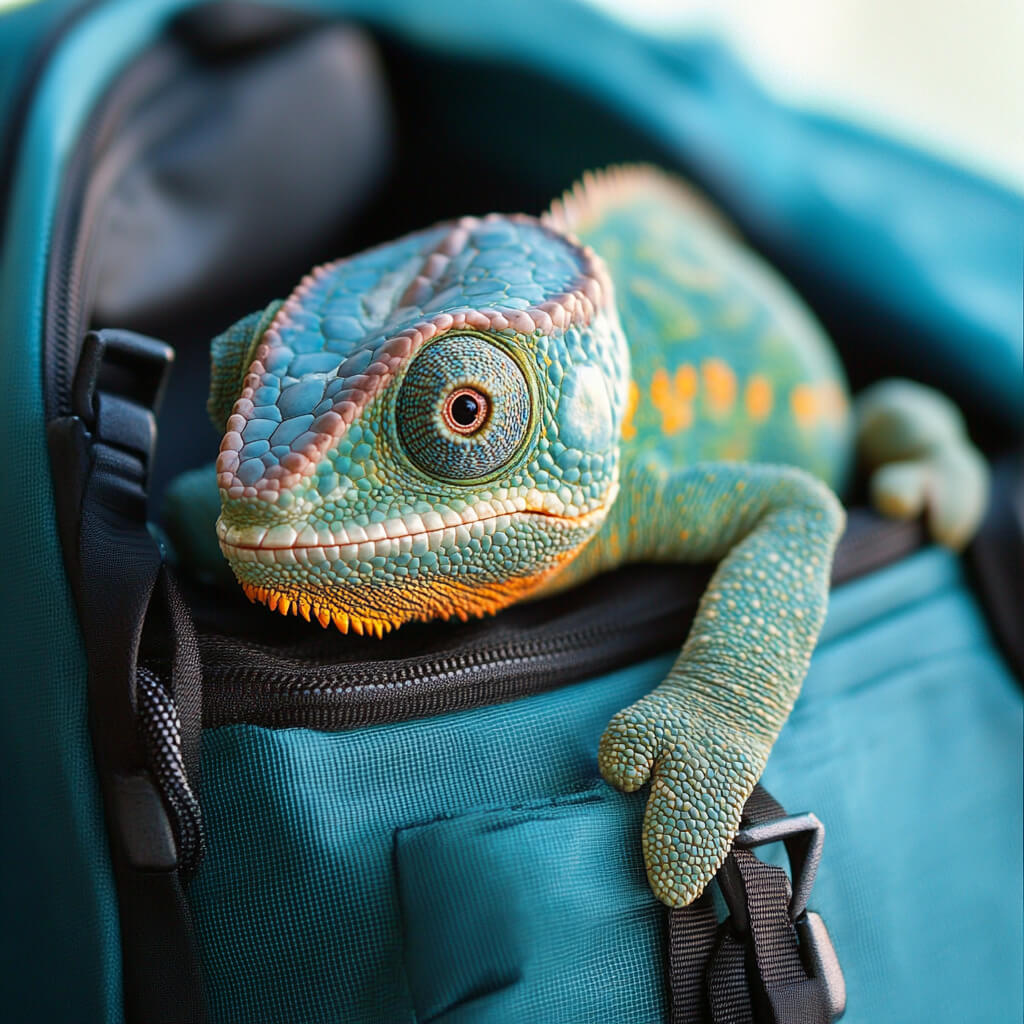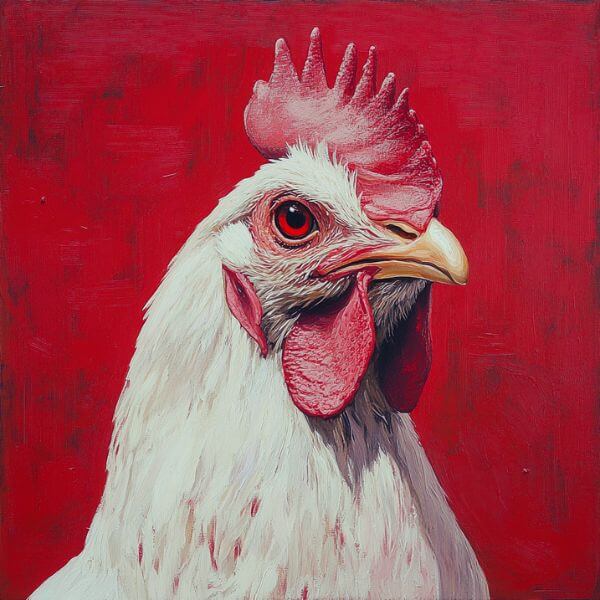Nope, chameleons shouldn’t eat orchids. But why, you ask?
Well, it’s not really part of their usual menu.
In the wild, chameleons are mostly bug-eaters.
They’re like tiny, scaly ninjas, snatching up insects with their super-long tongues.
Sometimes, they might nibble on a leaf or two, but flowers aren’t really their thing.
Orchids can be risky for our reptile pals.
While they’re not the most toxic plants out there, it’s better to be safe than sorry when it comes to our colorful friends.
Risks of chameleons eating orchids
So, what happens if your chameleon decides to take a bite out of that pretty orchid?
Well, it’s not great news. Here’s a quick rundown of the potential problems:
| Problem | Symptoms | What to do |
| Tummy troubles | Loss of appetite, lethargy | Call the vet |
| Mouth irritation | Drooling, rubbing face | Check with a reptile doc |
| Allergic reaction | Swelling, breathing issues | Emergency vet visit! |
Plant toxicity is no joke for chameleons. Their little bodies can be sensitive to stuff that might not bother us humans.
That’s why it’s super important to keep an eye on what’s in their habitat.
Safe plants for chameleons
Now that we know orchids are a no-go, what can we put in our chameleon’s home to make it feel more like a jungle paradise? Here are some chameleon-friendly plants:
- Hibiscus
- Ficus
- Umbrella Plant
- Spider Plant
- Hibiscus
These plants are not only safe, but they also help with environmental enrichment. It’s like giving your chameleon a natural jungle gym!
Alternatives to orchids in chameleon habitats
If you’re bummed about not using orchids, don’t worry!
There are tons of other ways to make your chameleon’s home look amazing. Check out this cool table of ideas:
| Plant type | Examples | Benefits |
| Vines | Pothos, Philodendron | Great for climbing |
| Broad-leaf plants | Ficus, Schefflera | Provide hiding spots |
| Flowering plants | Hibiscus, Fuchsia | Add color (safely!) |
Remember, when choosing safe plants for terrariums, always double-check that they’re non-toxic and pesticide-free.
Proper chameleon nutrition
Okay, so if chameleons can’t eat orchids, what should they be munching on? Let’s break it down:
- Insects (the main course):
- Crickets
- Roaches
- Mealworms
- Waxworms (as treats)
- Veggies (the side dish):
- Collard greens
- Mustard greens
- Dandelion leaves
- Fruits (the dessert):
- Small amounts of apple or banana
Remember, chameleon feeding habits can vary based on their species and age. Always research your specific type of chameleon for the best diet info.
Creating a safe habitat for chameleons
Now that we know what to feed our scaly pals, let’s talk about making their home awesome and safe.
Here’s a quick guide to chameleon habitat setup:
- Size matters: Get a tall enclosure, at least 3 feet high.
- Climbing is key: Add lots of branches and vines.
- Hydration station: Use a dripper system for water.
- Light it up: Provide UVB lighting for vitamin D.
- Temperature control: Create a warm basking spot and cooler areas.
- Plant it up: Add safe, non-toxic plants for a natural feel.
FAQs
Are all orchid species toxic to chameleons?
While not all orchids are super toxic, it’s best to avoid them all to be safe.
What should I do if my chameleon eats an orchid?
Keep an eye on them and call your vet if you notice any weird behavior or symptoms.
Can chameleons eat any flowers or plants
Some flowers are safe, like hibiscus, but always check before adding any plant to their habitat.
How can I tell if a plant is safe for my chameleon?
Research is key! Look up reptile-safe plant lists and double-check with your vet.
What are the best food sources for chameleons?
Insects are the way to go! Crickets, roaches, and worms are chameleon favorites.
Conclusion
Alright, chameleon champs, let’s wrap this up! We’ve learned that while orchids are pretty to look at, they’re not the best snack for our color-changing buddies.
Stick to insects for meals and safe plants for decoration, and your chameleon will be one happy camper.
Remember, being a chameleon parent is all about creating a safe, fun environment for your pet.
So, do your homework, ask questions, and most importantly, have fun with your amazing, color-changing friend!
Keep those habitats safe and those chameleons happy, folks!







Leave a Reply